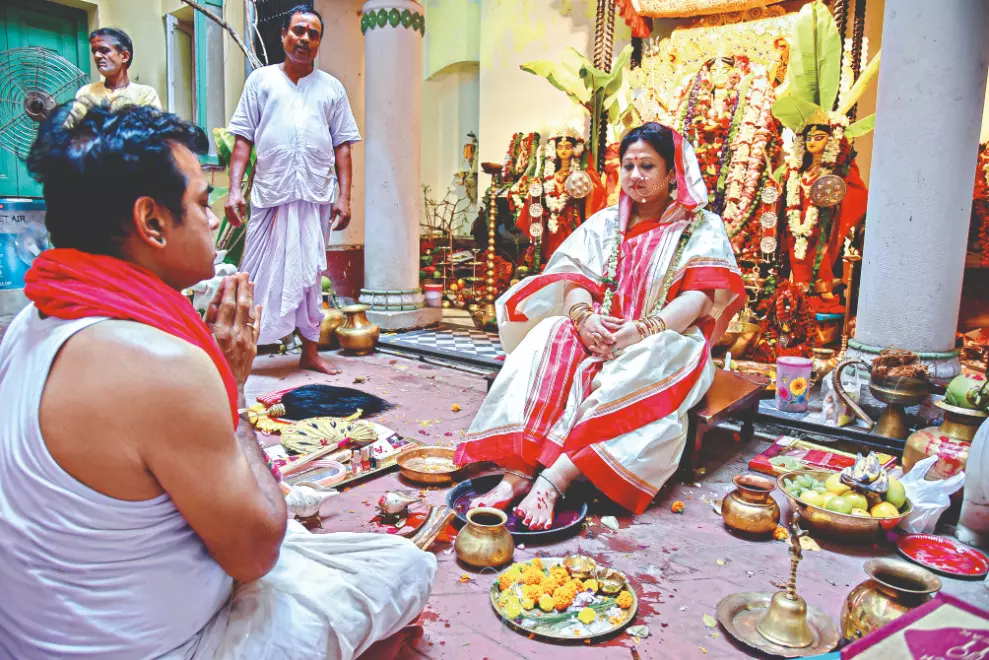Sadhaba Puja When Durga resides within
Rooted in age-old customs, Sadhaba Puja blends faith with reverence, reminding us of Bengal’s way of finding the divine in the everyday and keeping Durga worship close to the heart, within the home. Through Debmalya Das’ lens, the sacred ritual comes alive

We all know about Kumari Puja during Durga Puja, where a young girl who hasn’t reached puberty is worshipped as the living form of Goddess Durga. But step inside the ancestral mansions of Bengal’s old aristocratic families, the Bonedi Baris, and you’ll find rituals that go much deeper into the roots of Bengal’s cultural and religious traditions. One of the most unique and intimate customs you’ll witness in these households is the Sadhaba Puja. Held on Maha Ashtami and Maha Nabami, this ritual is based on the belief that every married woman, especially one blessed with ‘saubhagya’ (the state of being married), carries within her the divine energy of Goddess Durga herself.
In this sacred ceremony, a chosen married woman (Brahmin or non-Brahmin, depending on the household traditions) is invited, adorned, and worshipped as a living incarnation of the Goddess. She is offered fruits, flowers, sindoor (vermilion), alta, sweets, and other auspicious items symbolising fertility, prosperity, and divine feminine power.
The act of touching her feet, seeking her blessings, and applying sindoor to her forehead is considered a way of invoking Durga’s grace within the household. Performed mostly indoors, away from the grandeur of public pandals, this Puja reflects the profound spiritual essence of Durga Puja, reminding devotees that the Goddess resides not only in idols but also within every woman.
The ritual carries immense symbolic weight. By honouring the married woman, the household prays for continuity of lineage, marital harmony, and the well-being of the family. Rooted in age-old customs, Sadhaba Puja beautifully blends spirituality with social reverence, reinforcing Bengal’s tradition of seeing divinity in the everyday and preserving the intimacy of Durga worship within the home.



